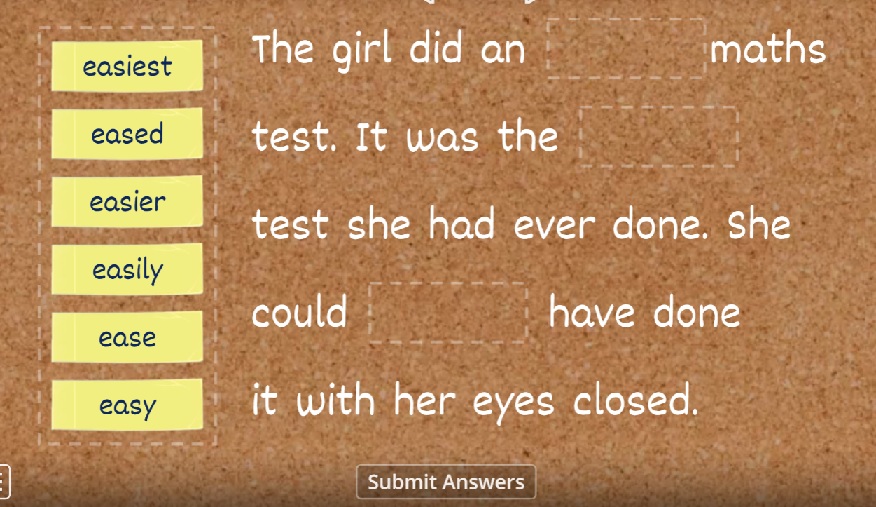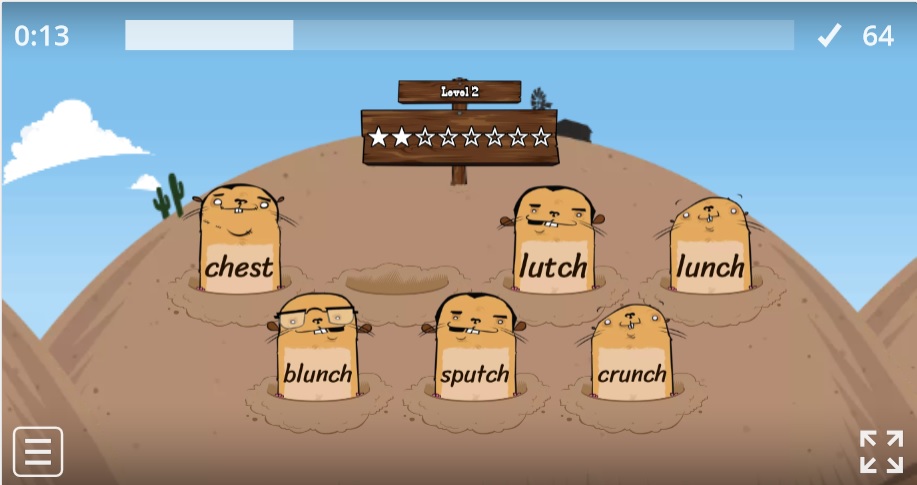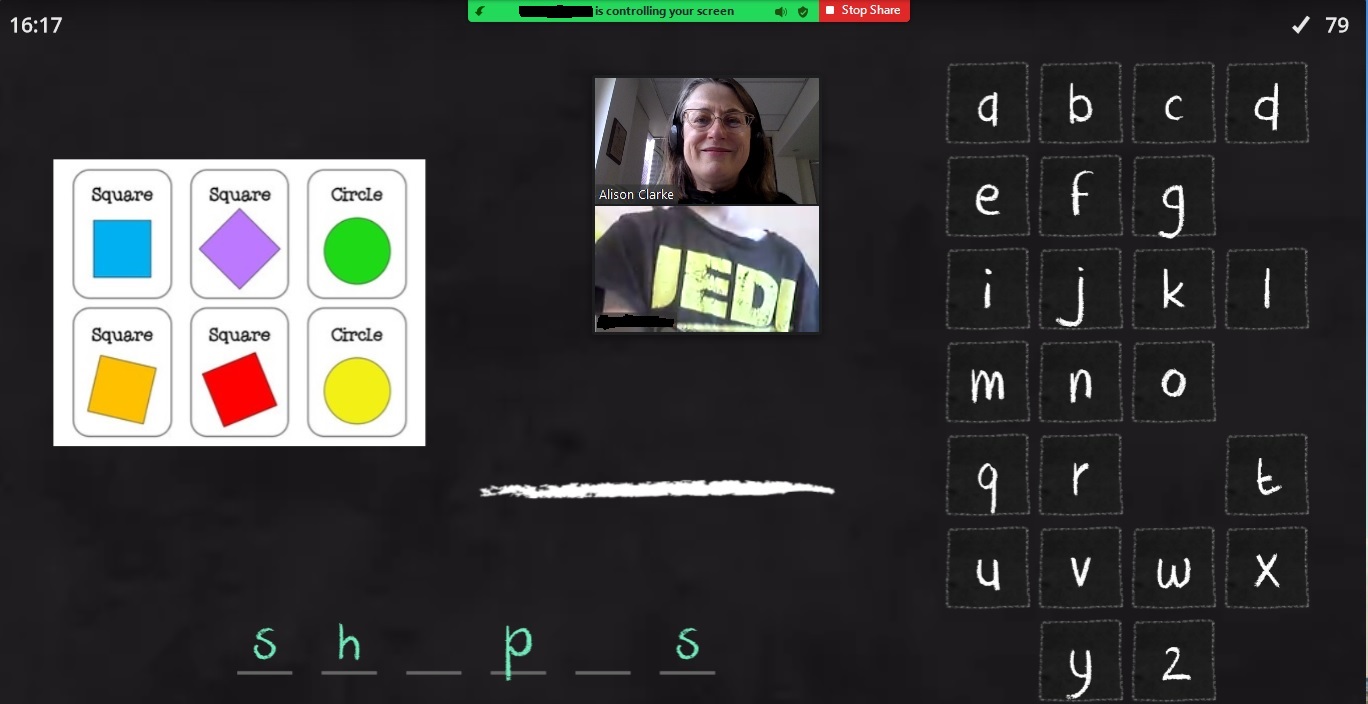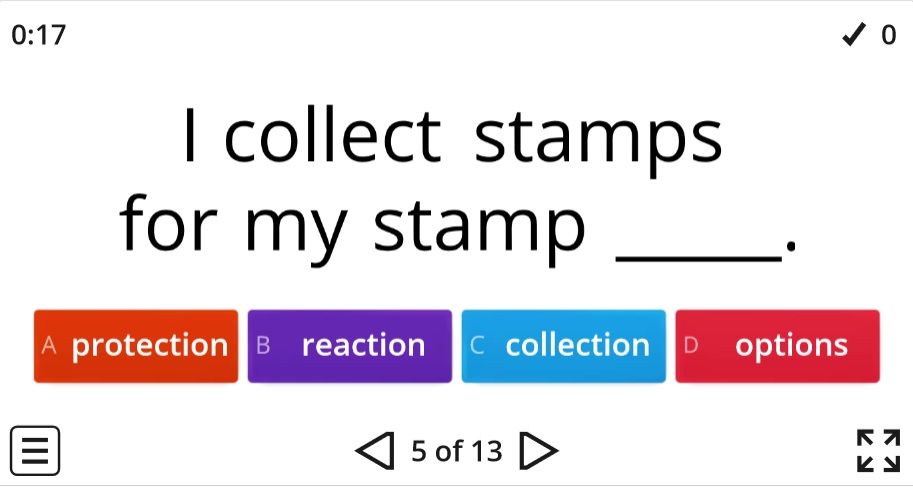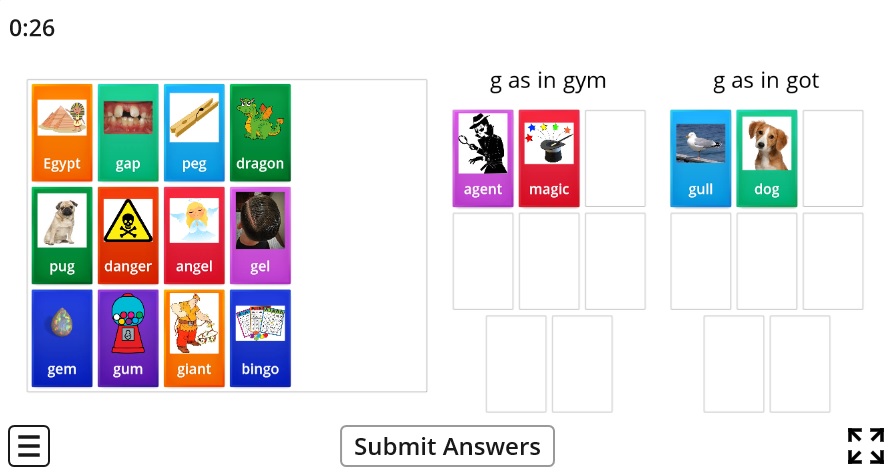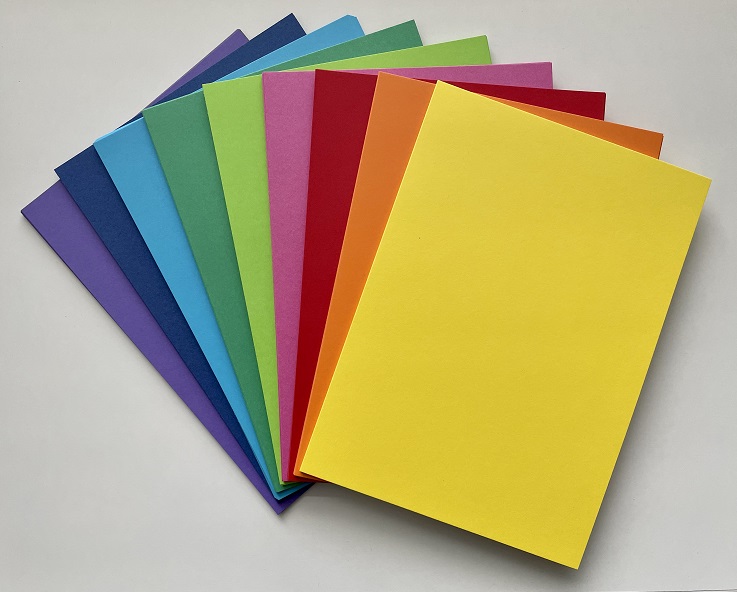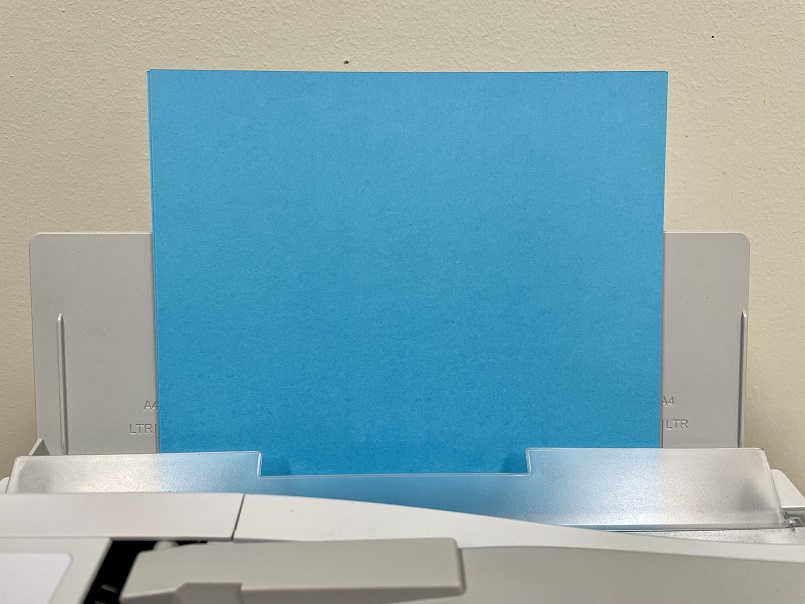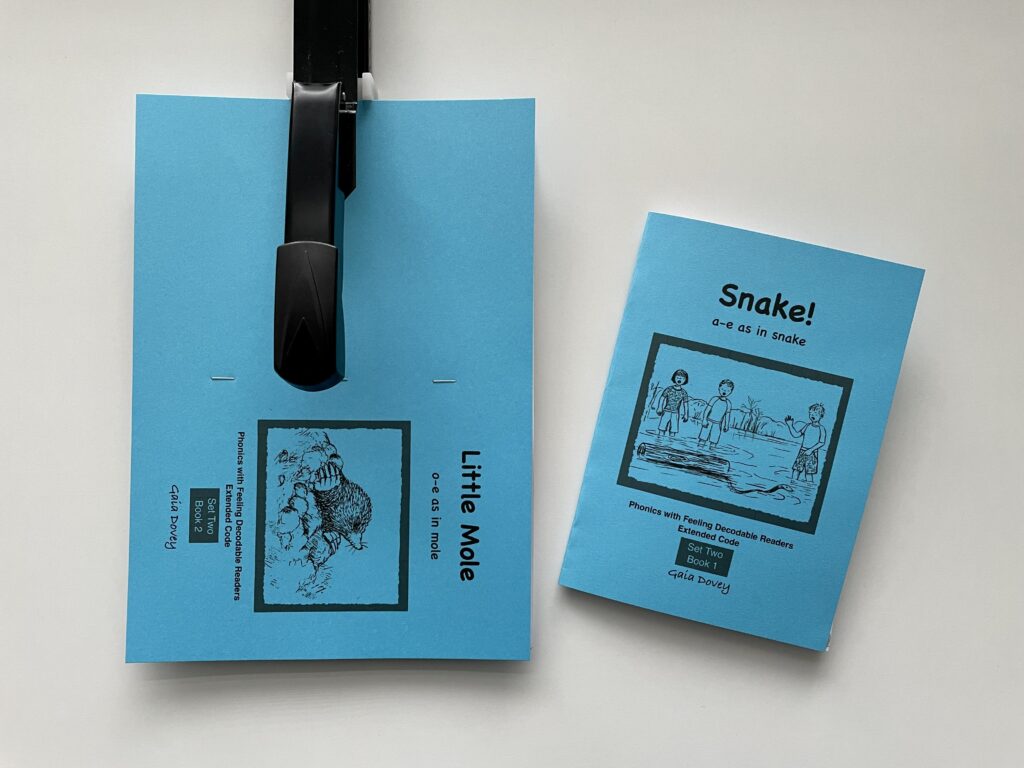A phoneme is like a dog
11 RepliesSome of my best-received blog posts have included analogies to (try to) explain complex ideas. So let’s try another one. A phoneme is like a dog.
We start developing a concept of what a dog is when we first encounter dogs, and hear people call them ‘dog’ (or ‘doggie’, for nice, safe-to-pat ones). One-year-olds then often start calling all four-legged mammals ‘doggie’ (and all large birds ‘duck’).
Over time, we gather data about the main, consistent, observable features of dogs: four legs, two ears, up-turned tail, fur, non-retractable claws, carnivorous, able to bark, yelp and growl. We do this by paying lots of attention to dogs, which isn’t hard when you’re small, and so many dogs are keen to rush over and lick your face.
Size is not a distinctive feature – a chihuahua and an Irish Wolfhound are both dogs. Fur colour and length don’t help, think Afghan hounds and dachshunds. Most dogs like chasing balls and sticks, and being taken for walks, but in my experience, rescue greyhounds say ‘meh’ to walks, and Pomeranians think it’s my job to fetch. Most dogs are friendly, but I’m not in a rush to pat Rottweilers or Bull Terriers.
The Official Thing that makes a dog a dog (even a three-legged one, or a yodelling Basenji), is the Canis lupus familiaris genome, but we usually learn about that well after we’ve pruned, shaped and fleshed out a robust abstract concept of a dog. Meanwhile, out in the real world, every dog is still different.
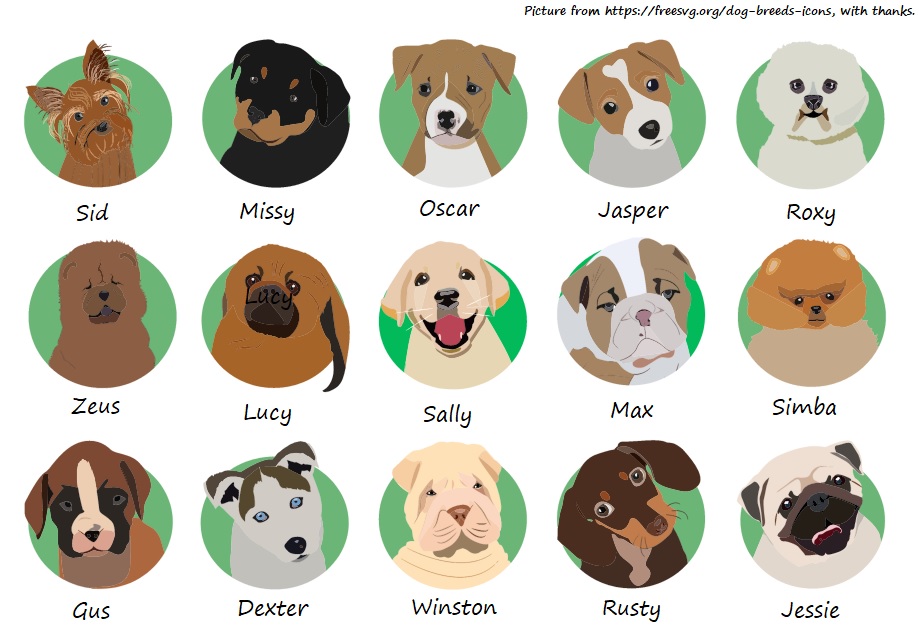
Similarly, literate English-speakers all have a concept of the phoneme /s/, though out in the real, live speech stream, where sounds shmoosh together, every /s/ is different. For the jargon buffs, a phoneme is the idea in your head, and the different ways it shows up in real, actual spoken words are called allophones.
The concept of the phoneme /s/ develops at the intersection of speech and print, when kids notice that a particular kind of sound and mouth gesture in spoken words is represented by the letter ‘s’ in written words.
Speech sounds and mouth gestures are a lot harder to pay attention to than dogs. They don’t rush up and lick you in the face. Speech is invisible and transient, and its gestures are mostly automatised and occurring without conscious effort by school entry, though some kids are still fine-tuning the difference between ‘rock/wok’, ‘freezer/freesia’, ‘thin/fin’ and ‘than/van’, and of course many EAL and Team Speech Therapy kids have more difficulties.
Getting children to say words slowly, listen to the sounds, and feel what’s happening in their mouths while writing/reading the relevant spellings is the teaching equivalent of bringing speech sounds up close enough to lick them in the face. It makes them hard to miss.
While gathering their data about /s/, children might notice that in the word ‘see’ it is produced with retracted lips, while the /s/ in ‘soon’ is produced with rounded lips. However, lip position is not a distinctive feature of the phoneme /s/, in the same way that size and colour don’t really help us work out whether an animal is a calf, cat or dog.
You can prolong /s/ as much as you like in dramatic poems about sly slithering snakes. Length in time is not a distinctive feature in Modern English phonology, though it is in some languages, and Old English had short and long vowels, which is why those terms still hang around today.
Since /s/ is produced slightly differently depending on its word position and neighbours, discerning it needs to be taught in different word positions and with different neighbours. That means saying, reading and writing it in a range of phonetic contexts, in words like ‘sat’, ‘sit’, ‘sob’, ‘sum’, ‘gas’, ‘yes’, ‘bus’, ‘best’, ‘desk’, ‘wisp’, ‘cups’, ‘hats’, ‘banks’, ‘spin’, ‘stem’, ‘skin’, ‘swim’, ‘slip’, ‘snip’, and ‘smog’, not just words starting with the sound /s/, or worse, the letter ‘s’ (sometimes including words like ‘sugar’ and ‘shop’, which don’t even contain the sound /s/, see here, here and here). Teaching about /s/ only in initial position is a bit like teaching about dogs but giving labradors as the only example.
Few adults can give the official, Canis-lupis-familiaris-genome type definition of /s/: it’s a voiceless alveolar fricative. But we know what a /s/ sounds and feels like, and notice when it’s moved so far forward it’s become /th/, or so far back it’s become /sh/, just as we have conceptual boundaries to differentiate cats and dogs, even ones as similar as these (yup, these are gratuitous cute animal pictures, welcome to the internet):



A child who has developed a robust, abstract idea of the phoneme /s/ based on saying lots of words with voiceless alveolar fricatives, representing them with the letter ‘s’ in written words, and reading words containing this sound-spelling relationship, is in a good position to go on to learn additional spellings: ‘ss’ in ‘Jessie’, ‘c’ in ‘Lucy’, (half of) ‘x’ in ‘Max’, and so on.
Of course, the dog is not the only animal, and /s/ isn’t the only phoneme. Luckily there are only (about, depending on your accent) 44 phonemes, not thousands of them – I’d never heard of a dhole until I read up on the Canis genus for this blog post. Learning, learning, all the time.
Reading expert Dr Mark Seidenberg and colleagues have produced some recent videos called Phonemes, Speech, and Reading, and Becoming Phonemic, if you’re keen to learn more about what phonemes are (and aren’t) and how children learn about them.
Top 10 online PA/phonics resources/activities
23 Replies200+ days in COVID-19 lockdown and no clear end in sight, so I’m scratching around for fresh ways to target phonemic awareness, phonics and morphology online. Maybe you are too. Here are some things I was SO GRATEFUL to find. A million thanks to their creators. Please add your favourite resources and ideas in the comments.
- Wordwall
I think my head would have imploded in the last 18 months without a Wordwall subscription (AUD$12 a month for all the games). I’ve made lots of activities which you can use for free, and so have many others.
Only the crossword and hangman games require spelling rather than reading to play, but not to create. I therefore get kids to help me create a game online: first choose a game, type the target words/sentences into it, then play the game, then go on the leader board. Playing the game again can be part of the homework, either on a computer or as a printable crossword or word search.
2. Phonic Books Moon Dogs At Home books and other resources
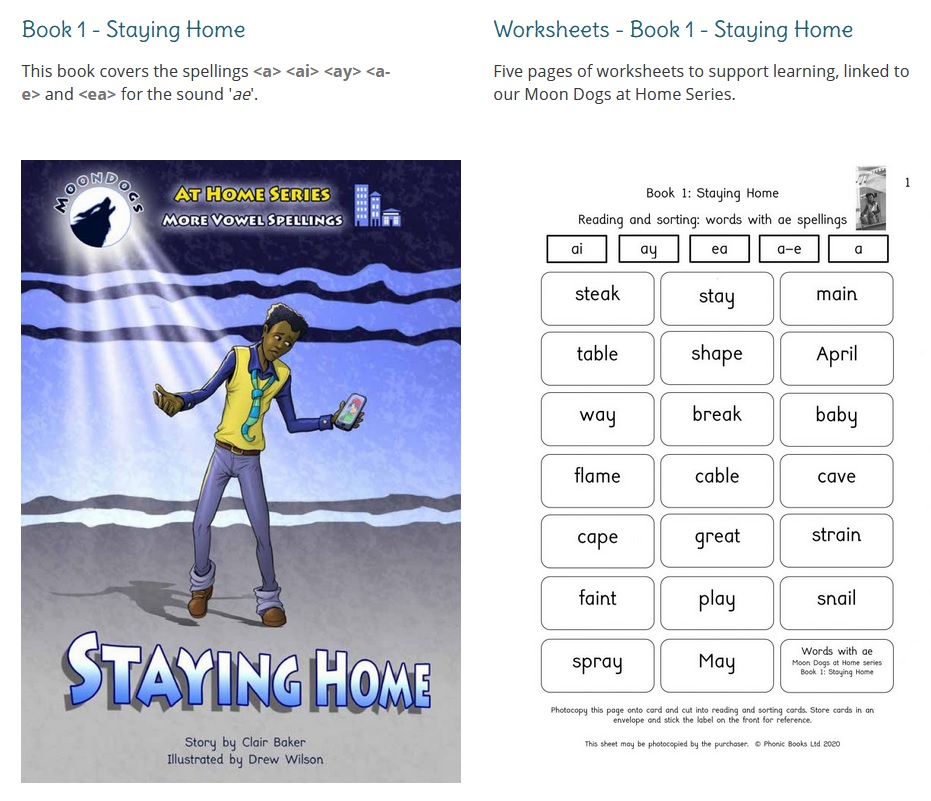
We use the physical Phonic Books resources a lot, and have found their free online resources very useful during our lockdowns. So generous, and so relevant. A lot of the WordWalls we’ve created also match their books’ teaching sequences.
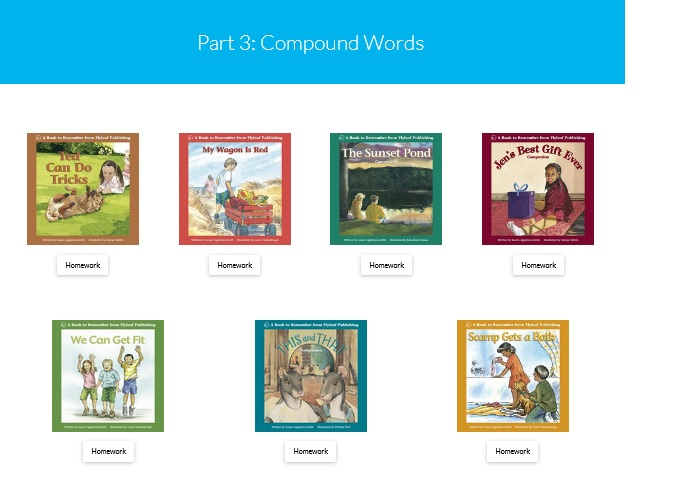
Flyleaf’s Online Portal contains lots of cute books from the UK which are perfect for online use, and all free at present, because of the pandemic. Again, so generous! Jen’s Best Gift Ever is my favourite, click here to read it, and here’s a comprehension quiz I’ve made as a follow-up activity (use it as a Gameshow Quiz for more pizazz).
4. ICT Games
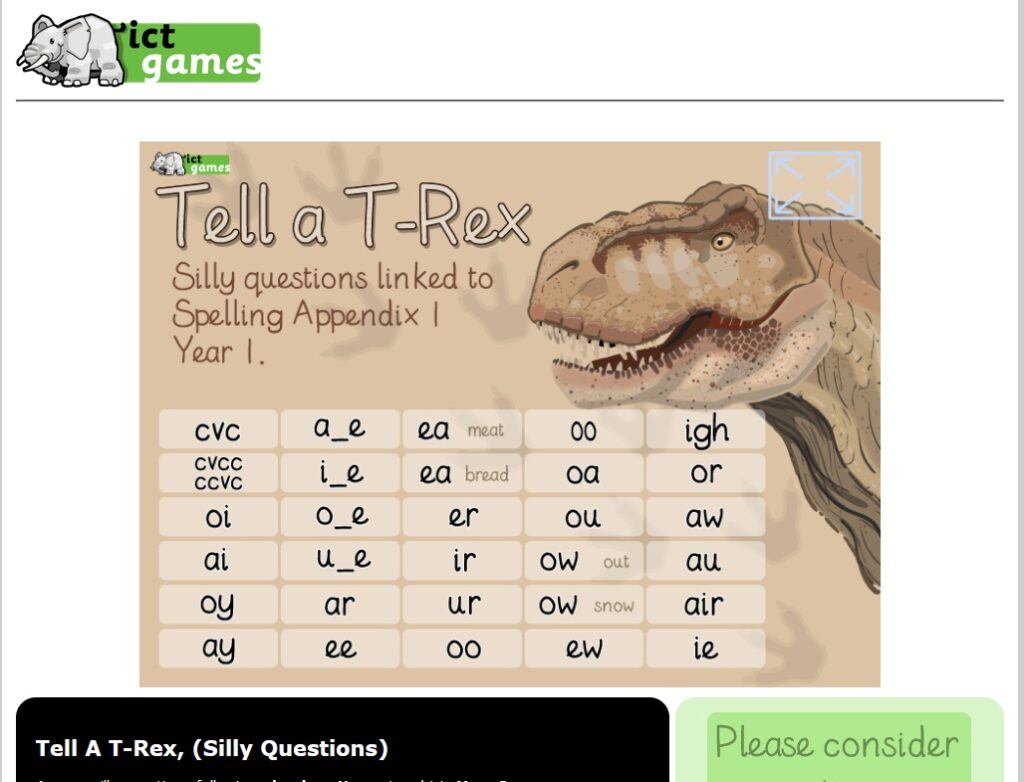
ICT games are all free online, and a quick, fun way to warm up or finish off a session. I often ask kids to type their own lists into Help A Hedgehog, then see how many they can read before the 90 second timer runs out. Other favourites are Tell A T-Rex, Poop Deck Pirates, Viking Full Circle, Forest Phonics, and Phonics Finder. This site runs on a donation model because the husband-and-wife team behind it think no child should be prevented from learning by lack of money. So if you can afford to donate, please do.
5. Sounds Write interactive whiteboard activities

If you’re using the program Sounds-Write, this USB contains heaps of activities ready for use online. They cover the Initial Code (one-letter=one-sound spellings plus major consonant digraphs) plus vowel spellings up to Sounds-Write Unit 28. The USB costs AUD$95, and I’ve definitely gotten my money’s worth.
Because many other Sounds-Write activities are provided as pdfs as part of the training, they have also lent themselves to online use (see item 8 below), and the Aussie/NZ Sounds-Write community has lots of great ideas and resources.
6. Little Learners Love Literacy apps and other resources
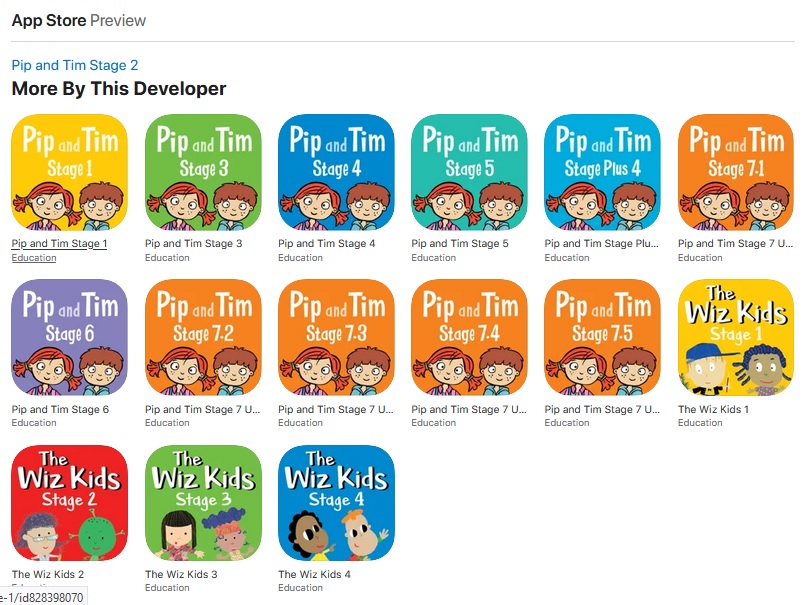
The app versions of the lovely LLLL books have been a great way to show young clients the books, by sharing the iPad screen online. Always affordable, the iPad versions are currently free till the end of September (at least in the Australian store). Which is so incredibly generous, and will help so many young, locked-down children learn to read. Lots of paper-based LLLL activities also lend themselves to online use, see item 8 below.
7. Powerpoint versions of decodable texts
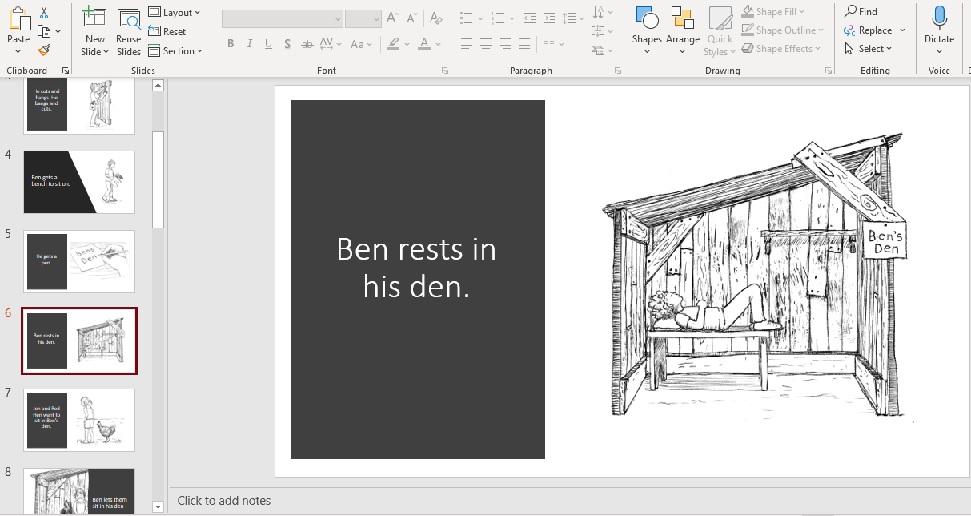
Some kids with good keyboarding skills like typing a simple story to dictation, to create a book they can then show a parent or teacher. I’ve used some Phonics With Feeling books for this, with author permission. I take screenshots of the pictures and paste them onto slides, type the text, then use Powerpoint’s formatting suggestions to make it look more schmick. Then I save it, delete the text and save it again under a different file name. Voila! A simple onscreen reading then spelling activity with large text.
8. Adobe Acrobat Reader editing tools
We use Zoom and it has been excellent, but I rarely use their whiteboard or editing tools. The free Adobe Acrobat editing tools work much better with pdfs. You can scroll through homework and cover it in ticks. You or the learner can type, change the font size and colour, and move text around. You can underline or put boxes around target words in sound searches (we play a guess-how-many-jellybeans-in-the-jar game with these, first guessing how many words with the target sound there will be). I just wish I could turn off the predictive text! (any ideas? I’ve tried everything!)

You can also play games (like the one above from Nicole Brady) using big dots as counters. Sounds-Write, Phonic Books and Little Learners Love Literacy books all have paper-based games that can be scanned as pdfs and used this way, and there are digital versions of the LLLL books. I use the iPad or iPhone app Make Dice held up to the camera for dice games, as I’m rubbish at online dice (all tips gratefully received). Make Dice can also replace the spinner for the Phonic Books Spin, Read and Spell games.
9. Kahoot!

I’m sad to say that I’ve only recently figured out that Kahoot! can motivate many kids to do quite a lot of reading. The best music teacher in the world (hi Roz!) told me it had revolutionised her lessons. Kids are often familiar with it from school, and think it’s fun and cool. We’re writing some downloadable quizzes now which should be easy to turn into Kahoot!s.
10. Jamboard
Google’s Jamboard is another useful tool I wish I’d discovered earlier. It’s like an online whiteboard with colourful post-it notes, from which I’ve made simplified versions of my moveable alphabet for word-building sequences, e.g. here the learner would be asked to change “stitch” into “switch”:
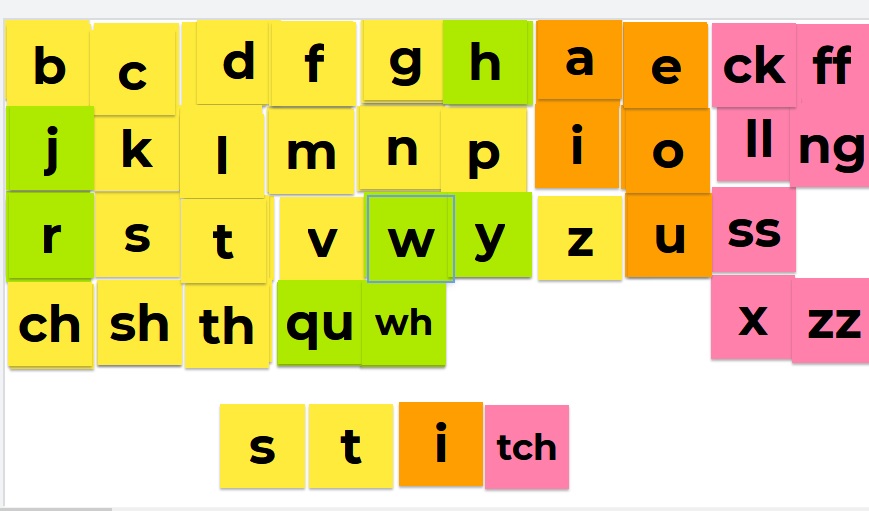
Kids tend not to stretch or rotate the tiles the way they have in other formats I’ve tried using for this activity. Jamboard is also a quick way to create neat word sorting activities:
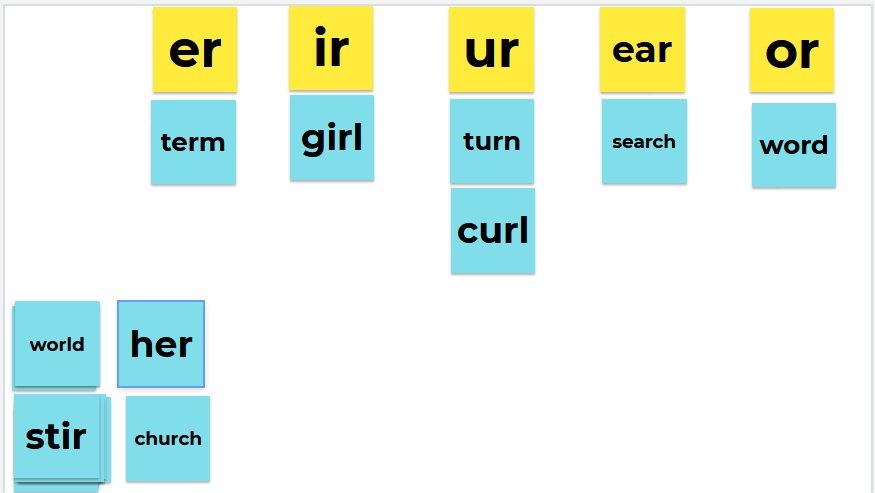
I get words for these sorts from my website’s sorted-by-sound lists (for same-sound-different-spellings activities) or sorted-by-spelling lists (for same-spelling-different sounds activities).
I hope you found some useful information in all that, especially if you’re still working online too. Pretty please leave any great ideas you have to share in the comments.
Don’t waste school PA time on syllables and rhyme
63 RepliesOur education system seems to be abuzz with discussion of the importance of phonological awareness, which is excellent. Most difficulties with reading and spelling English words can be traced back to poor awareness of the sounds in words.
However, I’m worrying that valuable lesson time is being wasted teaching school-aged children awareness of large, salient phonological features like syllables and rhyme, instead of focussing on individual phonemes, the smaller, harder-to-discern sound units represented in our writing system.
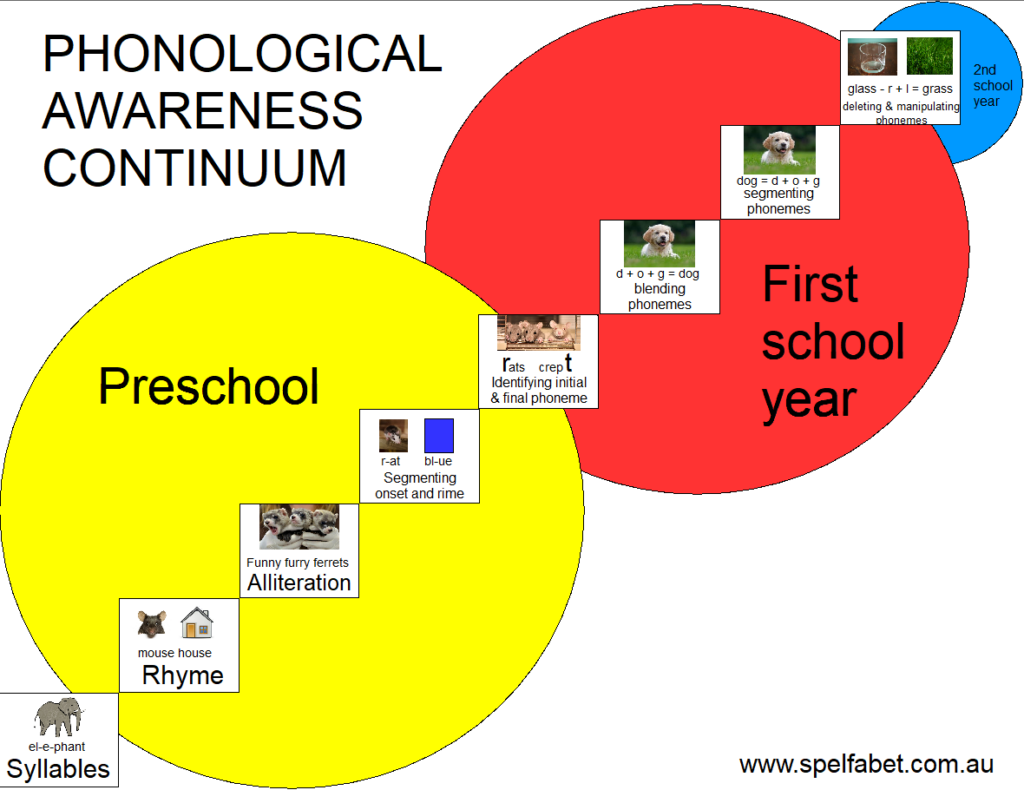
Various versions of the above phonological awareness continuum diagram, minus the circles I’ve added, have been floating around our education system for years, and probably helped foster the common misconception that awareness of syllables and rhyme are prerequisites for developing phonemic awareness. Yes, preschool rhyming skills tend to correlate pretty well with later reading skill, but correlation is not causation.
The Reading League in the US last year published a review of current research on phonemic awareness and phonics by University of Rhode Island Emeritus Prof Susan Brady, which concludes it’s not necessary to devote time and effort to fostering awareness of syllables and rhyme/onset-rime before children can acquire phonemic awareness. You can read the long version here, or a briefer version in their journal. Prof Brady uses the term “phonological sensitivity” for larger-chunks phonological awareness (everything except phonemic awareness).
Phonological sensitivity is evident across cultures, and acts as a mnemonic
Prof Brady writes that, “In cultures not having the benefits of literacy, phonological sensitivity skills have been documented, but not full awareness of phonemes, even by adulthood” (p6, and she refers to this old but interesting study, I guess there now aren’t many non-literate cultures available to study).
Ancient poems, chants and songs from predominantly oral traditions often have strong metrical structure, rhyme and/or alliteration. These are still features of poetry and song around the world, though admittedly my research on this has only been via travel, our excellent local Boite World Music events, WOMADelaide, and reading internet articles with titles like “9 Countries Whose Traditional Forms of Poetry You Didn’t Know About”.
As well as being integral to art forms, these phonological features make information easier to remember and transmit verbatim. The Iliad might have been lost to an ancient game of Biddelonian Whispers without its strict metrical structure. Beowulf might have drifted and dissolved into diverse dreadful dramas, and I doubt we’d remember the words of our favourite songs so exactly if they were written in free verse.
Phonemes are more difficult to discern, but are also powerful mnemonics
Phonemes are invisible and transient, and blur together when we speak in a process called coarticulation, making them hard to separate out. There’s no reason to be aware of phonemes unless you’re learning an alphabetic writing system.
Dr Linnea Ehri chaired the US National Reading Panel’s investigation of phonological awareness 20 years ago, and has been a leading researcher on phonemic awareness since then. I love her analogy of the phonemes in spoken words holding the “glue” needed to hold written words in memory. When children become aware of phonemes, they activate the glue. You can hear Dr Ehri talk about this from the 60 minute mark of this Reading League podcast, I’m sure you’ll then want to listen to the whole thing.
Dr Ehri explains that teaching children to say words slowly, listening for their sounds, and thinking about their mouth movements, builds phonemic awareness. It’s highly effective to use letters to represent sounds in phonemic awareness activities, as this makes the relevance/purpose of the activity clear and transferable, but representing sounds with tokens (buttons, shells, gemstones, banana chips, whatever) is also effective, for example with children who don’t yet know letters. Dr Ehri doesn’t talk about handwriting in this podcast, but I’m sure she would agree that saying words’ sounds while writing their spellings is also a powerful word-glue-activating activity.
This phonemic awareness continuum is seriously underspecified
If you look at the phonemic awareness steps in a typical phonological awareness continuum diagram, they’re not very informative. For a start, there aren’t many of them for such a complex and difficult process. Blending usually appears before segmenting, though these are reciprocal processes, and should be taught and learnt as such.
There’s also no useful detail on word types, though it’s obviously easier to blend and segment a word with three sounds, like ‘cat’, than it is to blend and segment a word with seven sounds, like ‘scripts’. It’s easier to delete or manipulate a single initial phoneme, like the ‘c’ in ‘cat’, than it is to delete or manipulate the ‘c’ in ‘scripts’. I’d also expect the average six-year-old to find it harder to blend/segment the word ‘scripts’ than to delete/manipulate the first sound in ‘cat’, so deletion/substitution aren’t always the hardest phonemic awareness activities. It all depends on phoneme identity, order and number.
If we represent vowels with V and consonants with C, then list all the possible combinations of these in single syllable words in English, putting example words in brackets, the list goes something like this: V (eye/I), VC (up), CV (go), CVC (hot), VCC (elf), CCV (stay), CVCC (help), CCVC (stop), CCVCC (crust), VCCC (ends), CCCV (spree), CVCCC (tents), CCCVC (strayed), CCVCCC (frosts), CCCVCC (splint), CCCVCCC (sprints) and CVCCCC (texts). These should be represented on the phonemic awareness continuum.
In general, it’s easiest to discern the first sound in a word, then the last sound, and then sounds that are in the middle. Internal consonants are especially hard to discern, which is why young children often write ‘stop’ without the ‘t’ and ‘help’ without the ‘l’. They blur into the sounds around them and get a bit lost. Sound type can also make a difference, for example the sounds /r/ and /l/ have vowel-like qualities, so sometimes children consider them part of the vowel.

I’d like to propose the above as an interim replacement for the less-helpful phonological awareness continuum diagrams currently floating around our education system. I’m sure people smarter than me (perhaps you?) can and will improve on it.
Nothing against syllables and rhyme for preschoolers, in fact I am planning to enjoy lots of them with my three preschool neighbours when our COVID Lockdown 6.0 finally lifts. But school-aged children need to activate their remembering-written-words glue by focussing on phonemes.
Phonics With Feeling books are now in the Spelfabet shop
11 Replies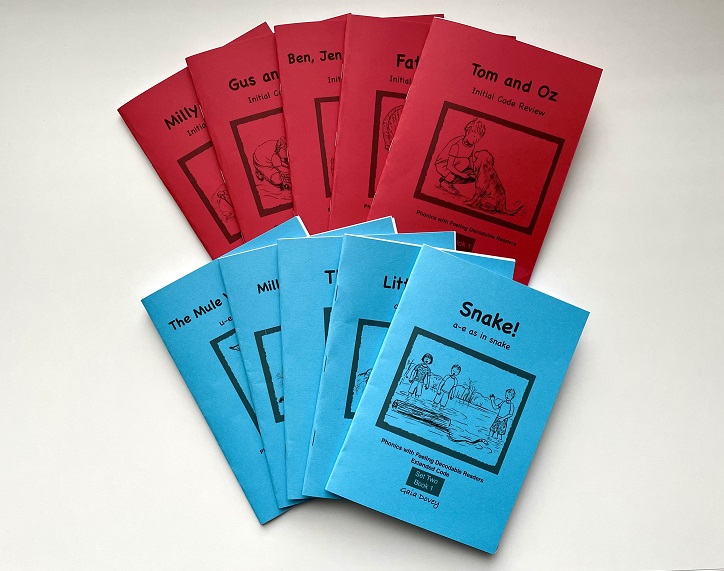
Six sets of the delightful, affordable, download-and-print Phonics With Feeling decodable books by Gaia Dovey are now available from the Spelfabet shop.
You can download and print a free sample book here. It’s about the ups and downs of siblings and pets, sharing and drawing boundaries, and solving problems. One boy I know got to this page…
….and exclaimed, “That’s just like my sister! She always wants to do my things, and it’s very annoying!” He was hooked. The cute illustrations add emotion and humour to the story. Some children might enjoy colouring them in.
Each set of books has a parent/aide edition (print up to 5 copies @ 40c per print) and a teacher/clinician edition (print up to 30 copies @ 20c per print). Not as cheap as the free-till-the-end-of September Little Learners Love Literacy apps (so generous!), but an affordable way to get multiple copies of printed decodable books.
These books are intended to complement, not replace, existing decodable readers. They aren’t for absolute beginners. The Initial Code Review set is intended for children towards the end of their first year of schooling or in Year 1. The Extended Code sets are intended for children in Years 1 and 2. Depending on the child, any of these books can be used with a slightly older learner who needs graphemes introduced at a fairly gentle pace, and heaps of practice. There’s only so many times you can read the same book.
These books have a higher word count than the typical decodable book, so are perfect for consolidation/fluency work. I imagine they’d also be great for extension work for children who can easily read the shorter, simpler books that are at the right level for most of their classmates, but haven’t yet been taught more complex spellings.
The author of these books has a PhD in literature, taught English language and literature, worked in teacher preparation, and originally wrote the books for her grandchildren. It shows. They aim to provide both reading success, and the pleasure and emotional engagement which motivates children to read. Their extra length allows for cohesive narratives, entertaining plots, engaging characters and themes worth talking about.
The Phonics With Feeling books originally had their own website, but it was too much hassle to run (if you’ve ever run a website, you’ll know what I mean). I nearly cried when they disappeared, and contacted the author to find out why. I’m already dealing with the hassle of a website, and she’s really nice, so we decided to join forces.
Only the first six of an eventual eleven sets of books are available now. The rest are on their way. The original books are being reorganised to match the teaching sequence in the Spelfabet version 3 workbooks and other materials, and a few extras are being written and illustrated.
Each set of books is downloaded as a pdf file, which you save to your computer, then print with (preferably) coloured covers. We’re using 220 gsm coloured cardboard for covers, printing the covers first, via the rear feed of the printer. Then we print the rest of the book on A4 paper on the “flip on short edge” setting, then assemble, fold and staple the books with our special book-stapling stapler (probably not its real name).
I hope you like these books as much as I do, and that they make many children excitedly shout things like, “That’s just like my little sister/brother!” while getting enough practice of major spelling patterns to become skilled and enthusiastic readers.
PS on 15/9/21: I’ve started making Wordwall quizzes as follow-up activities for these books, which can be played online for free, but you might need a subscription to access the printable version. The top of the first printable quiz looks like this:
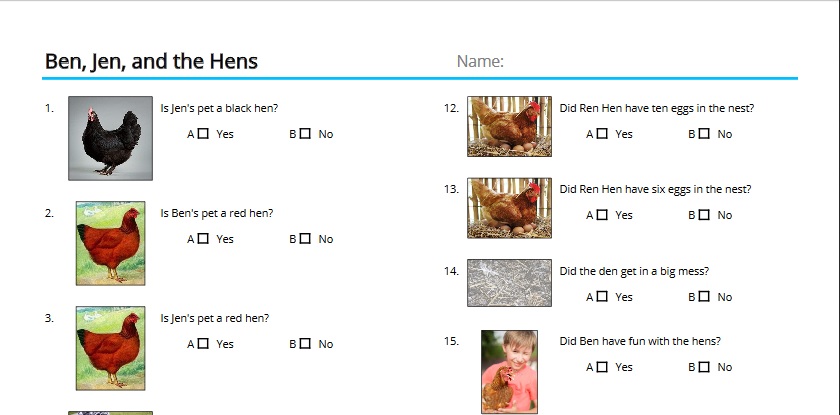
New word-building sequences
3 Replies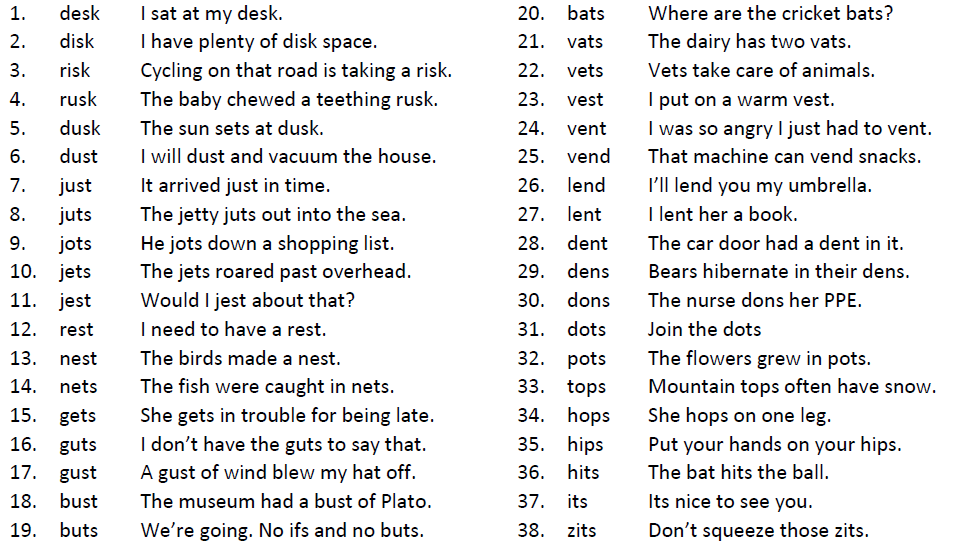
I’ve just revised my word-building sequences for the Moveable Alphabet to match the Spelfabet Version 3 workbooks.
The first set is available free from here. It follows the same teaching sequence as the Sounds Write program and books and Phonic Books Units 1-10, since we now use them here a lot. I’m hoping these sequences will be easy for parents and aides to use.
You can also build these sequences with the Embedded Picture Mnemonics flashcards if working with very young children, click here for a video showing you how.
The second set of sequences is $2 from here and the third is $3 from here. You’ll need a set of suffixes to build the third set, which are included when you download them. The suffixes are now also part of the basic Moveable Alphabet (I haven’t revised the advanced version yet, so just add the free download to it if you like).
Here’s a screenshot from the second set:
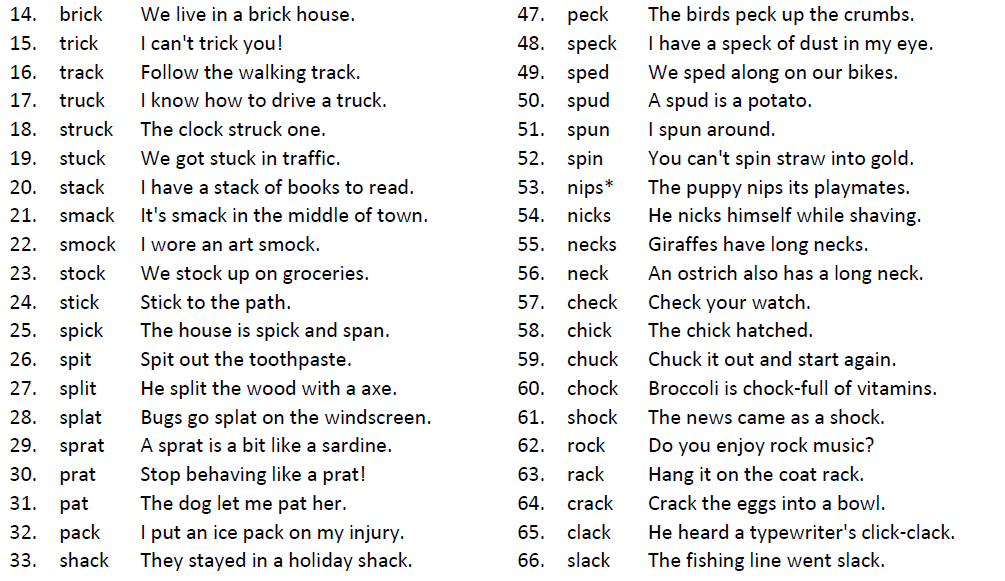
Here’s a screenshot from the third set:

I’m working on Level 4 sequences now, and updating the example teaching sequence (red button) under the website Spelling Lists menu to reflect the new workbooks and sequences. Sorry this is a process not an event – I’ve had a bit of overwork, lockdown and family drama burnout, plus it’s midwinter here in Melbourne, brrr.
On the cheerful side, Reading Science action now seems to be going on everywhere I look. Here’s just some of the gobsmacking free and cheap online learning on the amazing internets:
The AUSPELD Talking Literacy series
The LDA weekly Wednesday webinars
The Reading League YouTube channel, podcast and online academy
Think Forward Educators online events
La Trobe University SOLAR Lab short courses
Sounds-Write Phonics 1-to-1 symposium
Lyn Stone’s YouTube channel and website
Jocelyn Seamer’s YouTube channel and website
Aren’t they all great?! As Margaret Mead said, “Never doubt that a small group of thoughtful, committed citizens can change the world: indeed, it’s the only thing that ever has.”
New Spelfabet workbooks and EOFY discount
24 Replies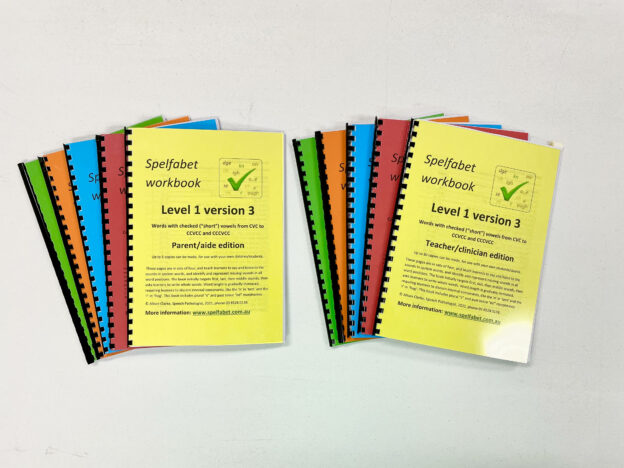
I’ve finally finished five new download-and-print Spelfabet workbooks. These version 3 books better align with the Sounds-Write program and the Phonic Books myself and my colleagues are now often using, and with the Drop In Series books for older learners.
For a 20% discount on these and anything else in the Spelfabet shop, type the coupon code “EOFY 2021” at the checkout.
Many of our clients have memory, attention, language or other difficulties as well as learning difficulties, and struggle to make the transition from Sounds-Write’s Initial Code to the Extended Code, which requires them to learn several spellings of a new vowel sound at once.
We only see our clients weekly or fortnightly, so need lots of activities that are easy for parents to supervise at home. I thus wanted new workbooks to teach vowel spellings more gradually, with earlier, explicit teaching about morphemes and work on polysyllabic words, and reviewing prior learning in lots of sentence-writing with punctuation (having read The Writing Revolution).
I’ll be talking about meeting the needs of clients like these at the free online Sounds-Write 1:1 Symposium on May 23-28. The lineup is amazing, it’s hard to know where to start, don’t miss it!
I’ve made videos about each new workbook, in which I hope you enjoy my fire-engine red fingernails (covering ugly nail bruise from dropping a chookhouse paving stone on my finger, yeow). There are also detailed descriptions of each book in the website shop, but essentially their contents are:
Level 1: Words with checked (‘short’) vowels from CVC to CCVCC and CCCVCC (C=consonant, V=Vowel)
Level 2: Consonant digraphs, basic suffixes, and up to three-syllable words with varied stress
Level 3: “Long/short” vowel contrasts, “soft” c and g, extra suffixes and some prefixes
Level 4: Seven extra vowel sounds, four extra vowel spellings, and more practice of patterns introduced in earlier books.
Level 5: 14 extra vowel spellings and more practice of previous patterns.
Like the previous workbooks, Version 3 has a parent/aide edition and a slightly more expensive teacher/clinician edition, the only difference being that you can print more copies of the teacher/clinician file. File pictures are in colour, but you don’t have to colour print them. Most of the pictures in the workbooks are PCS, a trademark of Tobii-Dynavox LLC, all rights reserved, used with permission.
The old Version 2 workbooks and kits are still in my website shop in the “old versions” folder, if you still want one, or haven’t finished downloading ones you’ve bought. Sorry that I’ve only been able to finish half the workbooks for Version 3, I’m working on more now, but life is busy!
Hope you and yours are all staying virus-free (I’ve had my first vaccine), and I’d love to hear your thoughts on the new workbooks.
New Embedded Picture Mnemonics now available
11 Replies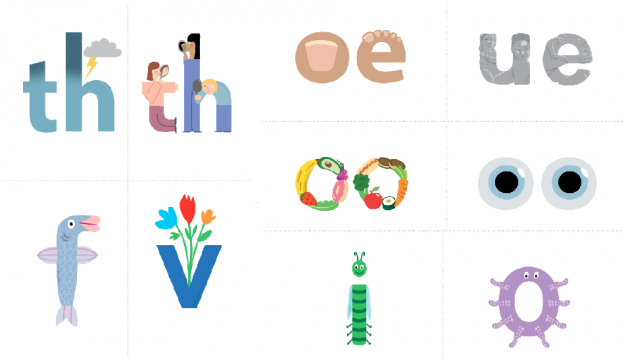
Despite a universe determined to throw spanners in my works, I’ve finally put artist Cat MacInnes’ new, improved version 2 Embedded Picture Mnemonics into the Spelfabet website shop. If you already bought version 1, you can now upgrade for free.
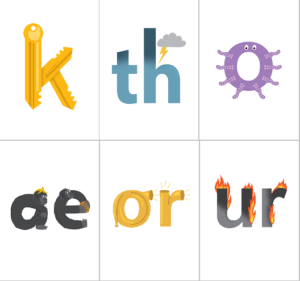 Research has shown embedded picture mnemonics help children learn the relationships between speech sounds and letters.
Research has shown embedded picture mnemonics help children learn the relationships between speech sounds and letters.
There are now two versions of the Spelfabet Embedded Picture Mnemonics: one for speakers of Australian/British (non-rhotic) English, and one for speakers of American (rhotic) English. If you speak another version of English, download both files and mix and match to suit your accent.
Each set contains a mnemonic for each sound (phoneme) plus one for each of the three letters that represent the same sound as c (k, q, x). The pictures are now more relevant outside Australia, with k as in ‘key’ not ‘kangaroo’, ur as in ‘burn’ not ‘surf’ and u as in ‘up’ not ‘undies’ (I’m a little sad about the undies, so if you are too, just keep using the original mnemonic).
The sets now contain ‘o’ as in ‘octopus’, ‘ue’ as in ‘statue’, ‘or’ as in ‘horn’, ‘th’ as in ‘thunder’ and ‘themselves’, and ‘f’ as in ‘fish’ (no adjacent consonant). There are new ‘aw’ as in ‘claw’ and ‘wh’ as in ‘whale’ mnemonics in the US set. The relationship between ‘short’ and ‘long’ vowels is now clearer, as the ‘long’ vowels have a consistent format (ae, ee, ie, oe, ue).
Both the Aust/UK and US A4 poster size files can be found here. The pictures on them are now bigger, with less white space around them.
Both the Aust/UK and US A4 flashcard size files (four to a page) are here. Consonants are in portrait format and the vowels are in landscape format, which I hope helps children understand the difference between vowel and consonant sounds.
You can make and change words with these embedded picture mnemonics, using the flashcard size with individuals and small groups, like this:
Use the poster size mnemonics if doing this with a whole class, asking a child to hold each mnemonic you’ve taught and another child to rearrange them, while the rest of the class writes down the words thus created.
You can also use the mnemonics to build Sound Walls with your class, adding sounds and/or spellings as they are taught in your phonics teaching sequence, and refreshing the wordlists as new vocabulary is learnt, so that you might end up with mnemonics that look like this:

Teachers, therapists and others have already thought of lots of other great ways to use these mnemonics – too many to list here.
Thanks for the feedback and questions about version 1, which made me think about how to improve them. I hope you like Version 2, and thanks to the always-creative Cat MacInnes for her artistic talent, patience and hard work.
Steps for upgrading a previously-purchased file:
1. Go to the Spelfabet website and click on My Account.
2. Type in the email address you used for your original purchase, and the password you created. If you can’t remember your password, just reset it.
3. Go to the downloads area, click on the file(s) you want, and save it/them to your computer before printing. Ordinarily you get three chances to download any file from the online shop, in case of computer crashes or power outages, but I’ve increased this to four for these files in case some previous purchasers have used up their first three.
Any feedback or problems, email me on info@spelfabet.com.au.

